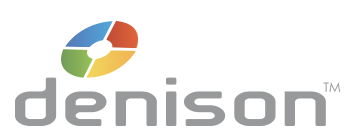Is the Pulse Survey Dead?
By Bryan Adkins (Denison CEO & Partner)
OK, now that I have your attention, the answer is no. However, much has been said about the death of the annual survey which I am also here to say is alive and well. The question of pulse vs. annual survey is a false dichotomy. In some respect it is like asking if taking one’s temperature replaces an annual physical. Both are important and both meet a specific need.
It is understandable that some may want to ring the death knell for the annual survey, many of which focus on satisfaction, engagement, morale, and HR-specific areas of interest (compensations, benefits, etc.). The argument for pulse is that regular engagement with the workforce is important, and that annual surveys fall short. Annual surveys are infrequent and, some say, irrelevant. Pulse technology allows for frequent and broad interaction across the organization and the ability to use crowdsourcing to surface and prioritize ideas and actions. It offers a valuable tool for continuous feedback, breaking down barriers to communication and collaboration.
So, what is the case for the annual survey? I will speak to our culture assessment and why, in my humble opinion, it is as important as pulsing the workforce and arguably even more so. Culture is a system, and a system that we know directly impacts the performance of an organization. To understand the system, you need a system-based approach. The Denison model and assessment allows you to see whether different but interrelated aspects of the organization are aligned or in conflict.
We see it all the time. An organization struggling to change and adapt also has weaknesses in its strategy or employee capability. Changes fail because they are not linked to a coherent strategy or because employees lack the skills needed to execute. Often customer issues are identified but departments cannot coordinate to resolve them, and these silos cause unmet customer expectations. Or we see that employees are not empowered and instead remain in a state of red-tape-induced paralysis. We also see managers preach risk taking, but not provide the space to learn from mistakes, creating an environment in which trying new things is met with fear. The result: Organizations stagnate, or worse, freeze.

If, as a leader, you are not thinking systemically about your organization, you are missing the big picture. Is your strategy having the impact you expect in the marketplace? Does you mission, vision and values inspire and motivate? Do you have the capabilities needed to execute against strategies and goals? Is it a safe environment for taking risk and challenging old ways of working? Our culture assessment allows you to answer these, and many more questions, simultaneously.
In any profession, knowing what tools you have as well as when and how to use them, is important. If your annual survey is no longer relevant, ask yourself why. Most likely it is because you are using the wrong tool and asking the wrong questions. There is probably a history of thanking employees for their feedback and then getting back to business as usual. Before you write-off the annual survey, ask yourself, is the problem the timing or the topics being measured?
A systems-based assessment that measures aspects of culture that impact business performance is what you need. The data will show critical interdependencies, identify root causes, and set the stage for actions that have real business impact. It allows you to see whether the collective efforts across the organization are aligned or in conflict.
Need a quick response to a specific question? Use a pulse. Want to understand how well the overall system is working? Assess the system. Together these tools have the potential to create a culture that delivers sustainable performance and engage employees to answer burning questions in real time.






